asNeeded
Type of resources
Available actions
Topics
Keywords
Contact for the resource
Provided by
Years
Formats
Representation types
Update frequencies
status
Scale
-
The positions of the glacier termini in Hornsund are derived with very high frequency in the period 1991–2018. Over 230 multispectral and Synthetic Aperture Radar (SAR) data were used: LANDSAT 5, LANDSAT 7, LANDSAT 8, Terra ASTER, Alos AVNIR, SPOT 5, ERS-1, ERS-2, ENVISAT, Alos PALSAR, TerraSAR-X, TanDEM-X, and Sentinel-1. SAR data were used to detect any variability in the glacier front during the polar night. The satellite data were digitized manually to obtain the ice cliff position. Multispectral images were orthorectified and geocoded in PCI Geomatica and ArcGIS software. SAR data were usually provided at the SLC level, so that both radiometric and geometric corrections could be applied using the same methods, and with the same digital elevation model (2008 DEM SPOT developed by the IPY-SPIRIT Project; Korona et al., 2009). The SAR data were processed in BEAM (http://www.brockmann-consult.de/cms/web/beam). Sentinel data downloaded from the Sentinel’s Data Hub were already processed. Data not published.
-
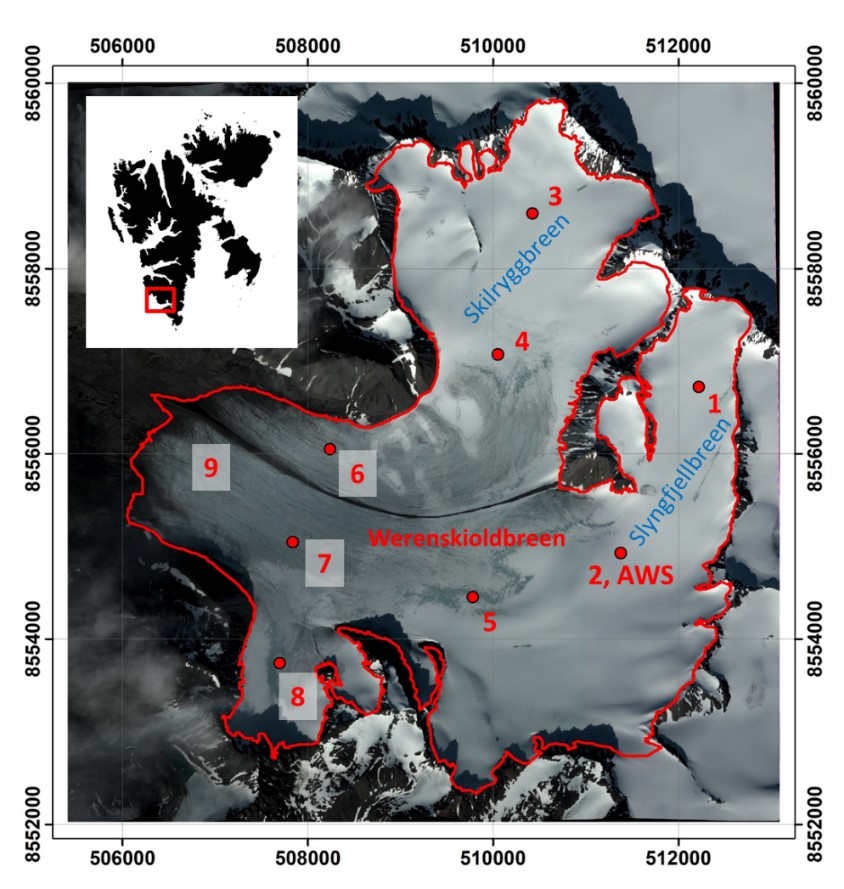
In the years 2009-2019, 49 samplings (shallow drilling or snowpits) were made on the glacier during the spring measurement campaigns in order to determine the bulk snow density and SWE. The average density of snow cover ranges from 386 to 447 kg/m3. The dataset includes part of the results from the project “Hindcasting and projections of hydro-climatic conditions of Southern 350 Spitsbergen” (grant no. 2017/27/B/ST10/01269) financed by the Polish National Science Centre, “Arctic climate system study of ocean, sea ice, and glaciers interactions in Svalbard area”—AWAKE2 (Pol-Nor/198675/ 17/2013), supported by the National Centre for Research and Development within the Polish–Norwegian Research Cooperation Programme and the SvalGlac—Sensitivity of Svalbard glaciers to climate change, the ESF Project, the project Integrated Arctic 355 Observing System (INTAROS)- Horizon 2020, the ice2sea 7th FP projects. The studies were carried out as part of the scientific activity of the Centre for Polar Studies (University of Silesia in Katowice) with the use of research and logistic equipment of the Polar Laboratory of the University of Silesia in Katowice.
-
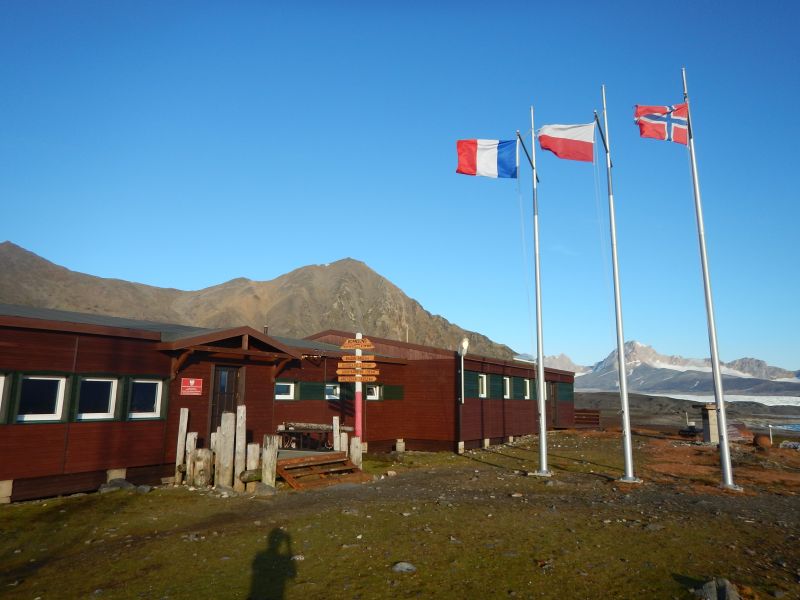
Precipitation measurements were made at AWS at Polish olar Station Hornsund (N77°00' E15°33') with a multi-type gauge that measured both solid and liquid. Results were into liquid water equivalent in millimeters. Precipitation measurements are slightly offset temporally, with a day defined as beginning at 6 a.m. on the observed day and ending 6 a.m. on the day after.
-
Firn extents of Hansbreen and Werenskoildbreen delivered from unsupervised classifications of single, dual and fully-polarimetric SAR data (ALOS-2 PALSAR, RADARSAT-2, Sentinel-1, ERS-2 SAR) between 2011 and 2017. Methods of classification: unsupervised ISO classification, H-a Wishart Classification. Results validated with terrestrial measurements (shallow ice cores drilling, Ground Penetrating Radar measurements). Research supported by the European Space Agency, Third Party Missions grant and Svalbard Science Forum, Arctic Field Grant 2018. For more details, please e-mail to this adress: bbarzycka@us.edu.pl.
-
Results of supervised classification of six Landsat 8 images acquired on: 25 May, 3 June, 22 June, 15 July, 4 August and 20 August 2014, covering glaciers in Hornsund fiord. Method of classification: Maximum Likelihood. The results show variability of snow cover areas in melting period of 2014 for glaciers located in Hornsund fiord and larger than 9 km2 (Körberbreen, Samarinbreen, Chomjakovbreen, Mendelejevbreen, Svalisbreen, Hornbreen, Storbreen, Kvalfangarbreen, Mühlbacherbreen, Paierlbreen and Hansbreen). For more information, please check: https://doi.org/10.3390/w9100804 Overview: Results of Maximum Likelihood classification of Landsat 8 images for analysed glaciers. Red - snow cover, yellow - glacier ice, black - debirs, grey - cloud cover.
-
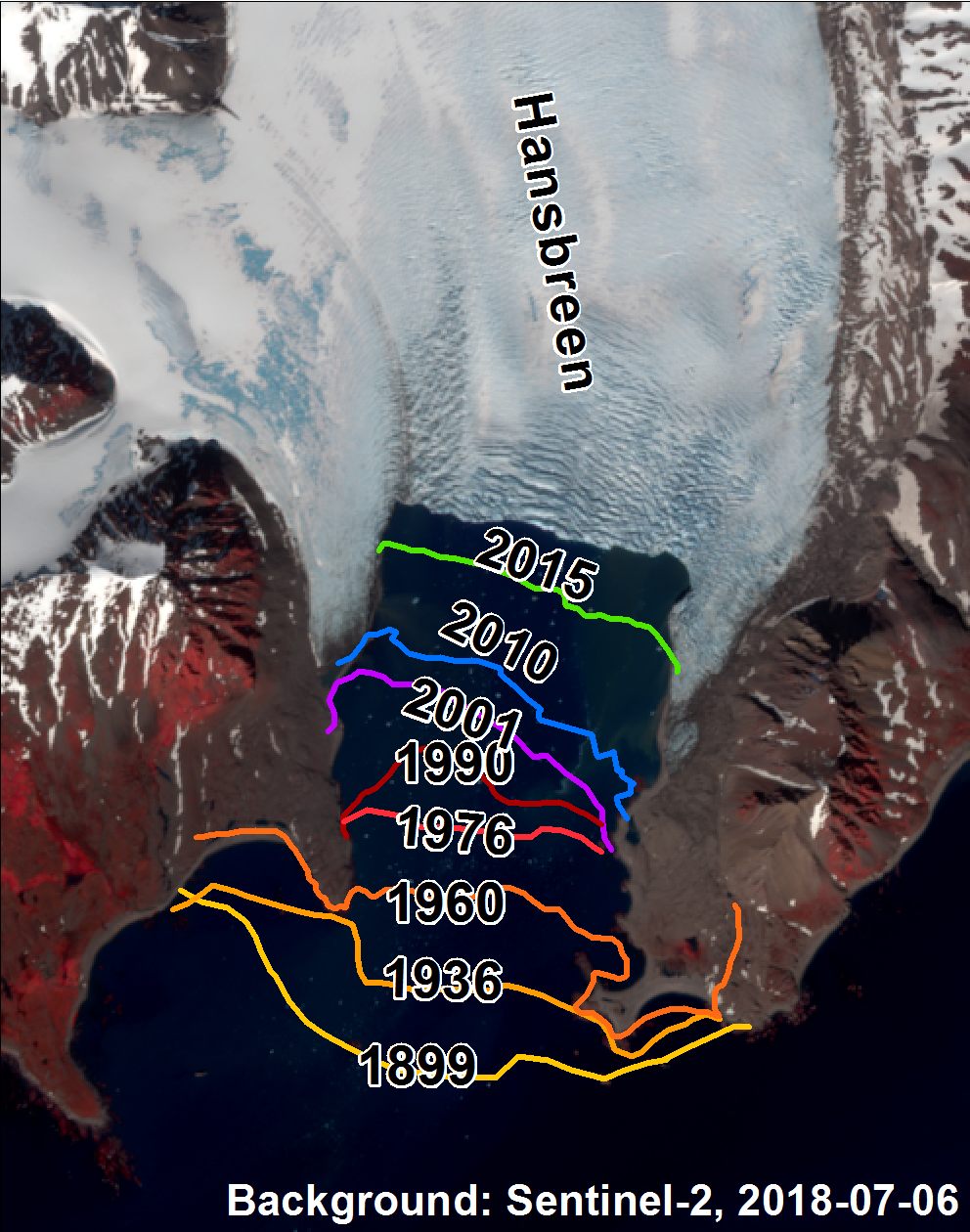
Ice front position of the tidewater glaciers in Hornsund was examined during the following periods: 1899–1936–1960/1961–1976–1990–2001–2005–2010. For the period 1899–1990, several archival maps of varying accuracy were used, sometimes difficult to assess. For the period 1976–2010 multispectral and radar satellite images were used. Detailed description of the source data and accuracy can be found in: Błaszczyk M., Jania J.A., Kolondra L., 2013: Fluctuations of tidewater glaciers in Hornsund Fiord (Southern Svalbard) since the beginning of the 20th century. Polish Polar Research, 34(4): 327-352.
-
https://egusphere.copernicus.org/preprints/2023/egusphere-2023-115/
-
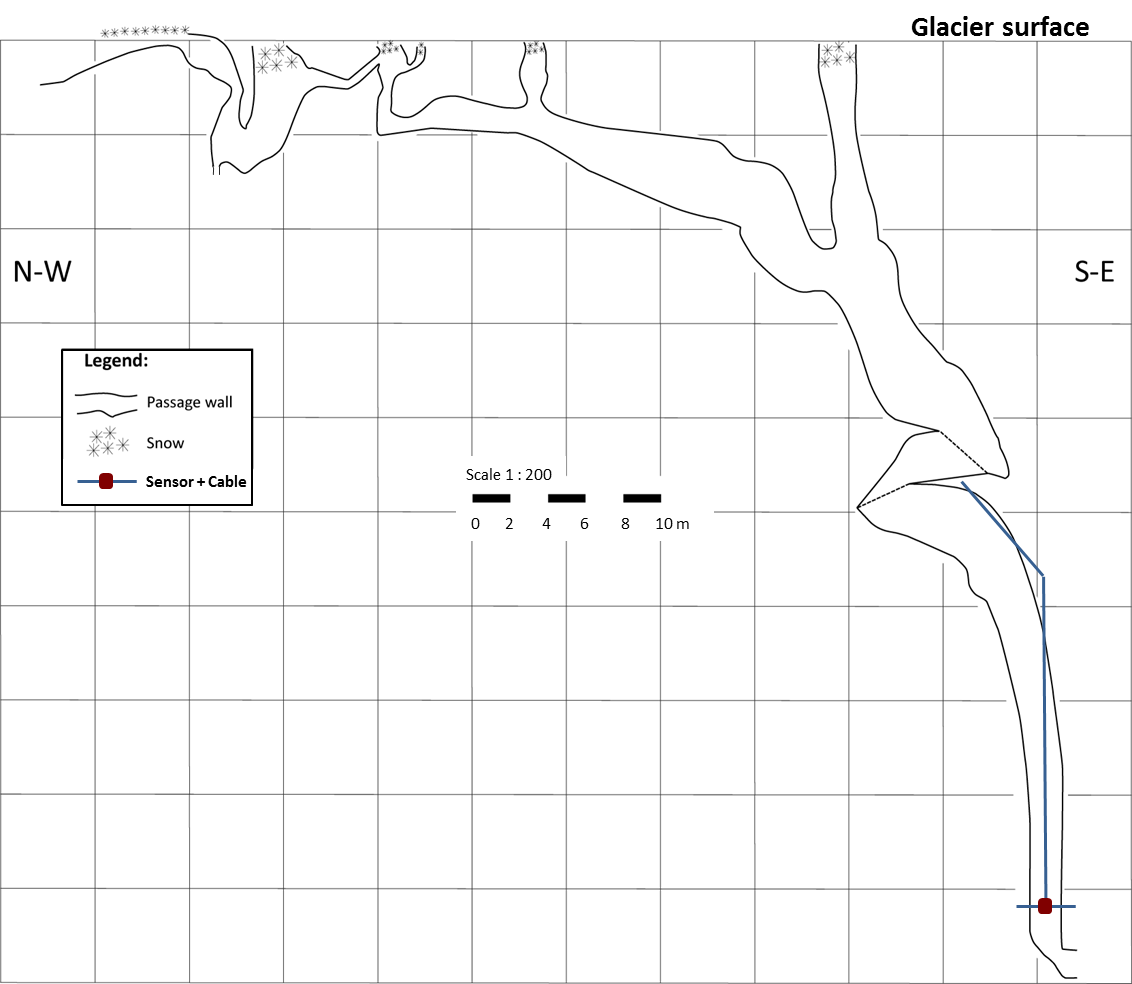
Englacial water pressure was recorded by placing HOBO 250-Foot Depth Water Level Data Loggers in the center of Crystal Cave (N77°02' E15°34', 174 m) channel system (Hansbreen glacier). Data loggers were set to record values every 30 minutes, resampled to daily in post-processing, and have a resolution of 2.55 kPa for a typical error of 3.8 cm water level. Water pressure was converted in water level. Sensor was placed in the cave by drilling anchor points into the ice above a vertical shaft, then hanging cables down in the center of conduit. Stabilization cables were used to keep sensors from attaching to and freezing into ice walls by manually rappelling down to the sensor and attaching it to three horizontal cables, anchored into the ice walls at about 120 degrees apart. Senor was installed in Crystal Cave at about 100 m total distance from the cave entrance, in ice about 74 m thick. The sensor was installed 28 m above the glacier bed and 46 m below the ice surface.
-
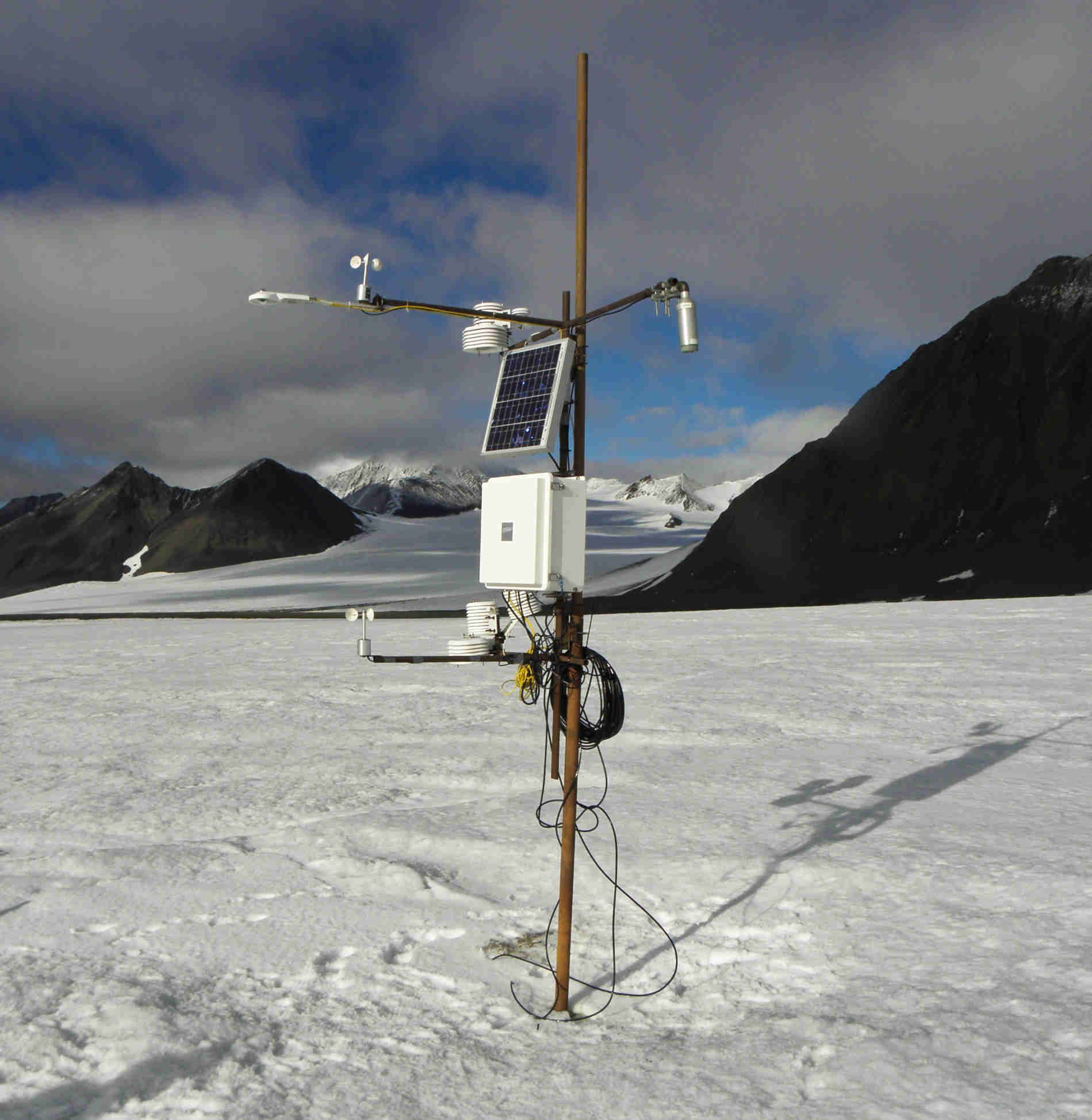
Air temperature measurements from AWS located on the Werenskioldbreen. The sensors are installed on a mast that is mounted in the glacier ice. During the season, the distance between the glacier's surface and the sensors increases. The instruments are serviced at least once a year between March and April.
-

The dataset includes point winter and summer mass balance measurements on ablation stakes in 2009-2020 and the calculated point annual mass balance. The dataset includes part of the results from the project “Hindcasting and projections of hydro-climatic conditions of Southern 350 Spitsbergen” (grant no. 2017/27/B/ST10/01269) financed by the Polish National Science Centre, “Arctic climate system study of ocean, sea ice, and glaciers interactions in Svalbard area”—AWAKE2 (Pol-Nor/198675/ 17/2013), supported by the National Centre for Research and Development within the Polish–Norwegian Research Cooperation Programme and the SvalGlac—Sensitivity of Svalbard glaciers to climate change, the ESF Project, the project Integrated Arctic 355 Observing System (INTAROS)- Horizon 2020, the ice2sea 7th FP projects. The studies were carried out as part of the scientific activity of the Centre for Polar Studies (University of Silesia in Katowice) with the use of research and logistic equipment of the Polar Laboratory of the University of Silesia in Katowice.
 Centre for Polar Studies
Centre for Polar Studies